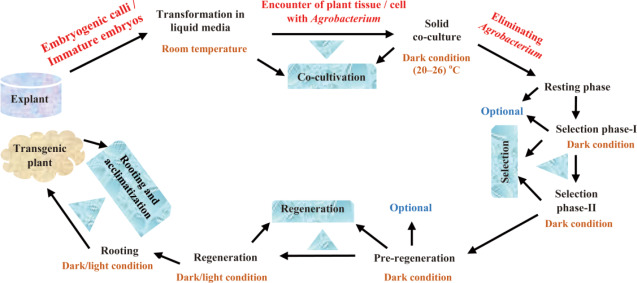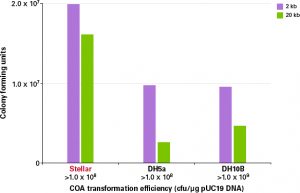
Product Description
GoldBio’s GV3101 Agrobacterium chemically competent cells are optimized for the highest transformation efficiencies, which is ideal for applications that require high transformation efficiencies, such as cDNA or gDNA library construction. The GV3101 strain has a chromosomal background C58 with resistance to rifampicin and the Ti plasmid pmp90 (pTiC58DT-DNA) with resistance to gentamicin.
Plasmid GV3101 Ti has the T-DNA region sequences deleted and transformation with a binary vector containing the missing T region results in a functional T-DNA binary system that allows the transfer of genetic material to the S genome of a plant. Guest. Therefore, this system is often used for Agrobacterium-mediated transformation of various dicots such as Arabidopsis thaliana, tobacco, potato, and soybean, as well as monocots such as maize.
Product specifications
- Competent Cell Type: Chemically Competent
- Species: A. tumefaciens
- Strain: GV3101
- Format: Tubes
- Transformation efficiency: ≥1 x 105 CFU/µg pCAMBIA1391z DNA
- Blue/white projection: No

Storage/Handling: This product may be shipped on dry ice. GV3101 Agrobacterium Electrocompetent cells should be stored at -80°C, pCAMBIA1391z control DNA should be stored at -20°C, and recovery medium should be stored at 4°C immediately upon arrival. When stored under recommended conditions and handled properly, these products should be stable for at least 1 year from the date of receipt.
Reagents needed for a reaction
- Chemically Competent Agrobacterium GV3101: 50 µl
- DNA (pCAMBIA1391z, 500 pg/µl): 1 µl
- Recovery medium: 1 ml
Quality Control
Transformation efficiency is tested using the pCAMBIA1391z control DNA supplied with the kit and using the protocol provided below. The transformation efficiency should be ≥5 x 107 CFU/µg pCAMBIA1391z DNA. Non-transformed cells are tested for adequate antibiotic sensitivity.
General rules
- Handle competent cells with care as they are very sensitive to temperature changes or mechanical lysis caused by pipetting.
- Thaw competent cells on ice and transform cells immediately after thawing. After adding the DNA, mix by gently tapping the tube. Do not mix cells by pipetting or vortexing.
Note: A high-voltage electroporation apparatus capable of generating field strengths of 16 kV/cm is required.
